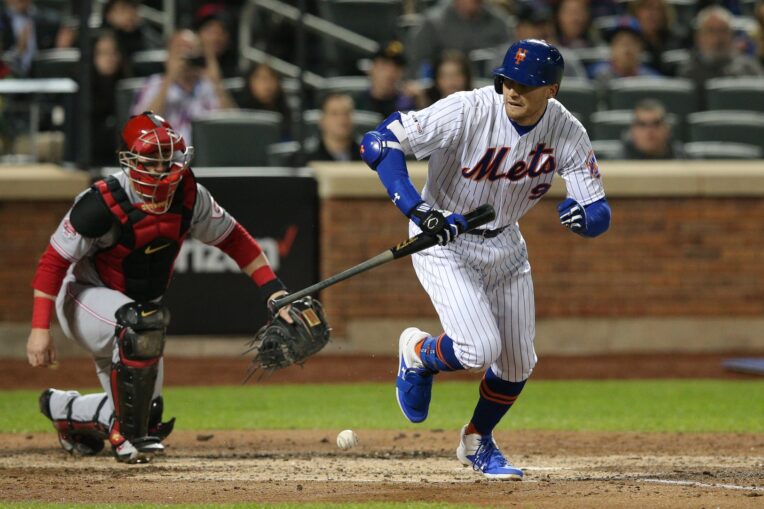
The New York Mets offense has largely not been the main sticking point when it comes to why they have been mediocre to below average.
However, one issue the team has had on offense for the majority of the season is getting pitch counts up on pitchers. Through the team’s first 125 games, the Mets ranked last in all of baseball, averaging 3.78 pitches per at-bat.
Now, before I continue, it must be acknowledged that the Minnesota Twins and Houston Astros rank in the bottom 10 in this statistic as well. Therefore, the importance of this stat is probably fair to be questioned.
That being said, those are the only two playoff teams on that list behind the Mets, with the Cincinnati Reds, Kansas City Royals, Miami Marlins, Arizona Diamondbacks, Colorado Rockies, and Pittsburgh Pirates also slightly ahead of New York.
As for why the Twins and Astros get away with taking a limited amount of pitches, they have a .274 and .272 average, respectively. The Rockies also have a strong offense as well and that is explained by the same statistic as well, ranking fifth at .269.
The Mets, though, rank closer to the middle-of-the-pack at 11th in all of baseball with a .258 average as a team.
That average combined with the number of pitches they are seeing gives them a formula built for an inconsistent offense reliant on players in the lineup that are hacking rather than waiting for their pitch while simultaneously tiring out the opposing team’s starting pitcher.
This issue was exemplified to a tee against the Miami Marlins on June 19 when the Mets lost 3-0 and allowed Sandy Alcantara to get a complete game shutout throwing a mere 89 pitches, less than 10-per-inning on the day.
For those wondering what the amount of pitches per game they are forcing opponents to throw, that number resides at 147 which is actually league-average.
While many might be saying that this statistic isn’t important or is meaningless, the fact of the matter is the more pitches a hitter forces their opponent to throw, the more likely they are to make a mistake-pitch that could end up in the Coca-Cola Corner.
That is why the return of Brandon Nimmo from the 60-day IL (neck) could be so incredibly vital for this team.
Nimmo, 26, actually ranked 12th in all of baseball last season with 4.23 pitches per plate appearance in 2018, which would represent a significant difference from the free-swinging Juan Lagares or Carlos Gomez he would be replacing in the lineup on a nightly basis.
While that doesn’t seem so significant, the ability to extend an at-bat is important as it makes a manager consider pulling a starter earlier in this day-and-age and gives rise to the odds of getting a pitcher to make the mistake pitch each batter is craving in a given plate appearance.
On top of that, Nimmo’s elite .404 OBP from last season will be an extremely welcome addition to a team that currently sports a middle-of-the-road .324 OBP on the year.
Nimmo, as mentioned before, will be replacing Lagares (.282 OBP) in the lineup which will be a large-scale difference for the Mets even if the team would be sacrificing defense in center field.
While Nimmo was not playing well prior to his going on the IL on May 22 with a lowly .667 OPS on the year, he actually sustained the injury on April 14 and claimed his “neck locked up” on April 16 as detailed by Laura Albanese of Newsday.
Well, on April 16, Nimmo was hitting .241/.388/.463 with three home runs and eight RBI, which is much more in line with his .263/.404/.483 slash line from 2018.
Regardless, it’s hard to argue that the return of Brandon Nimmo isn’t going to at least slightly help the Mets lineup. The team could definitely use the 2018 version of Nimmo.















